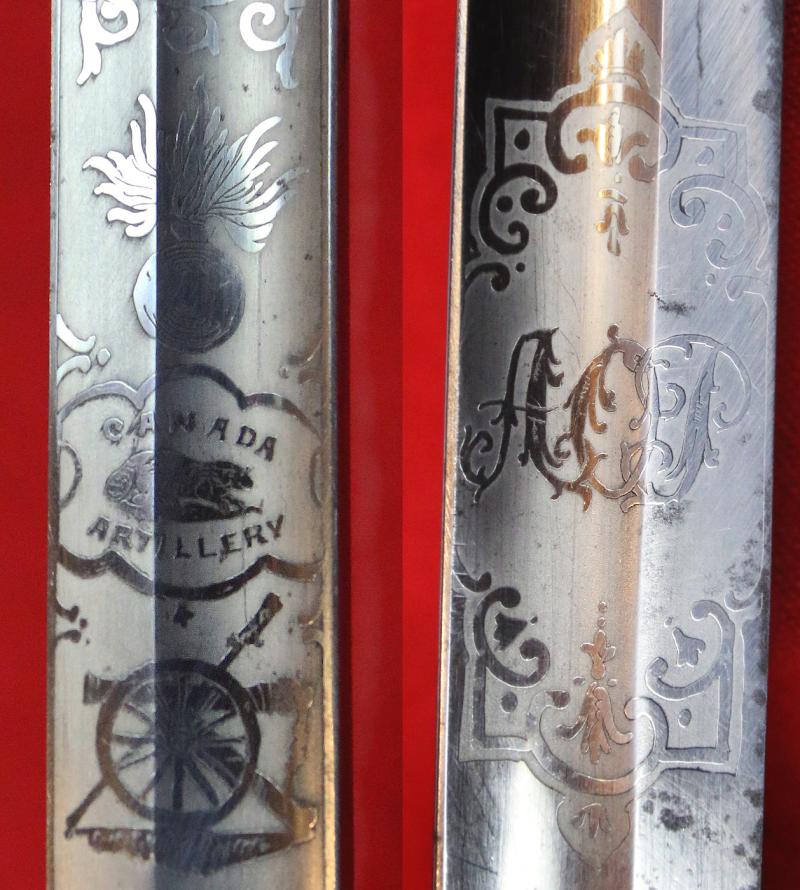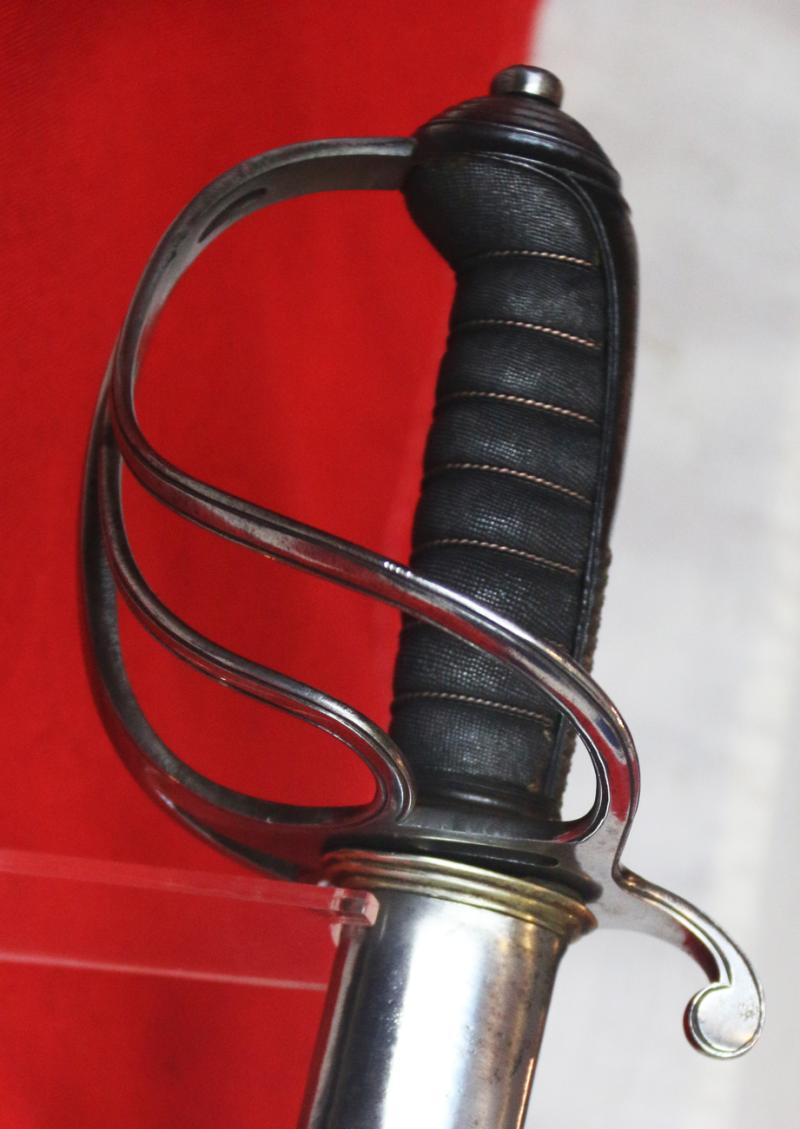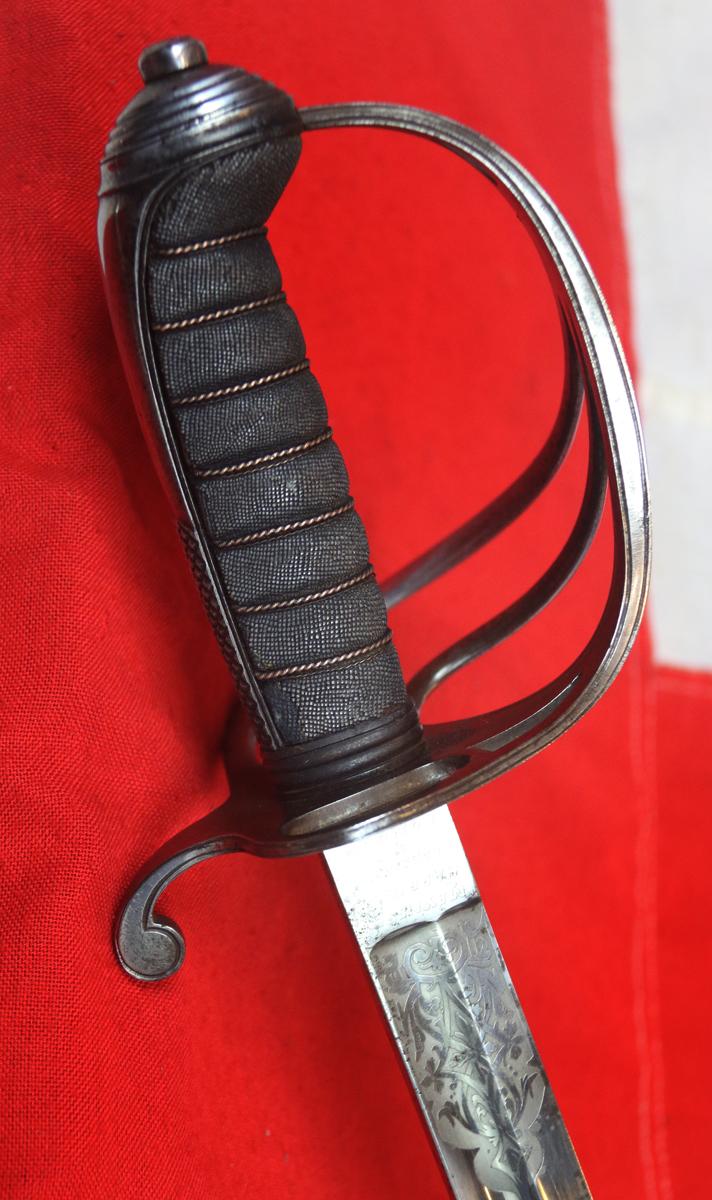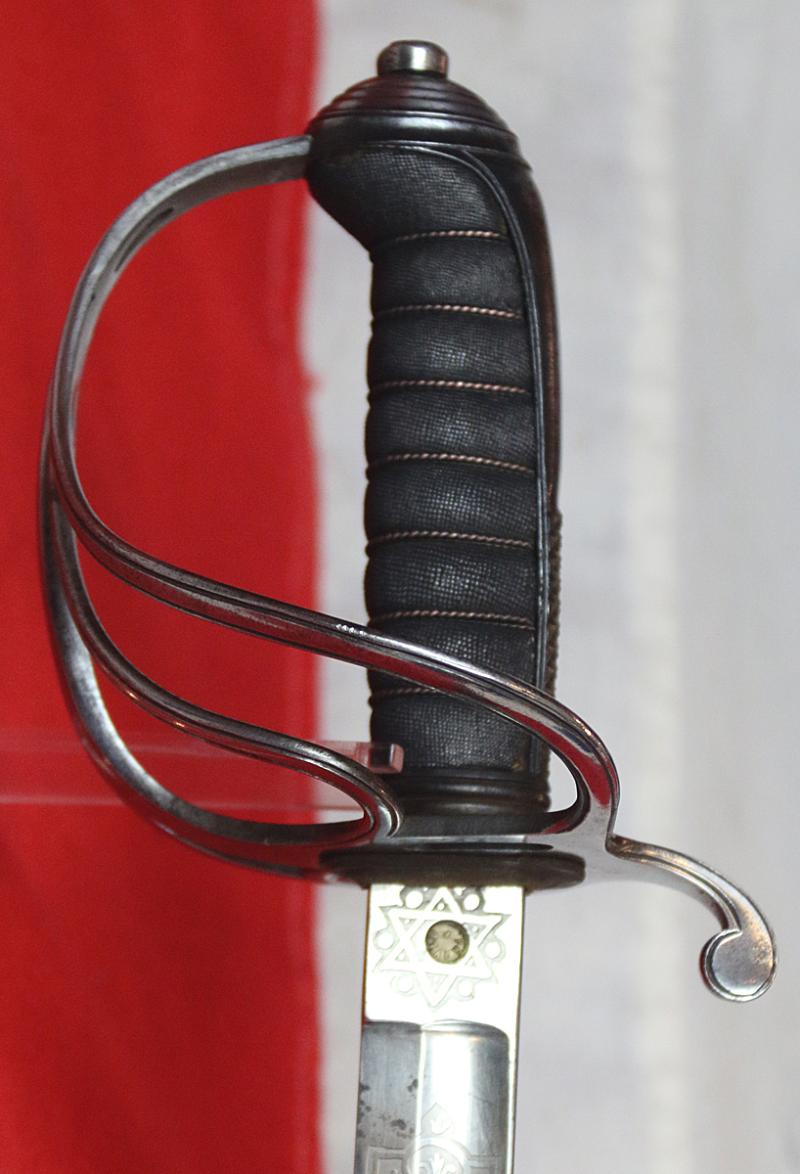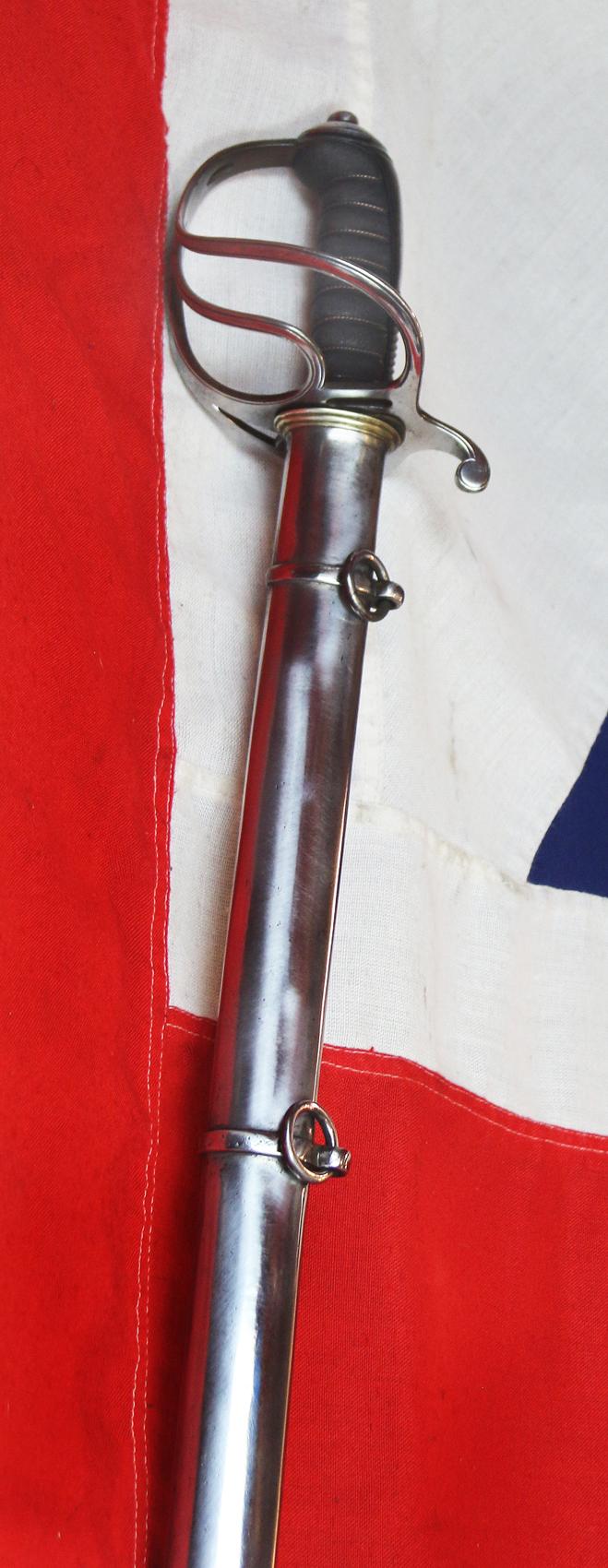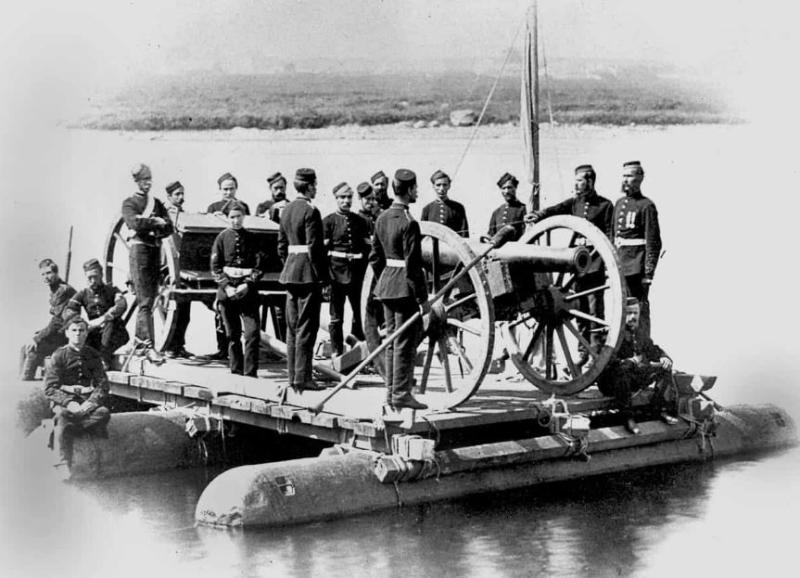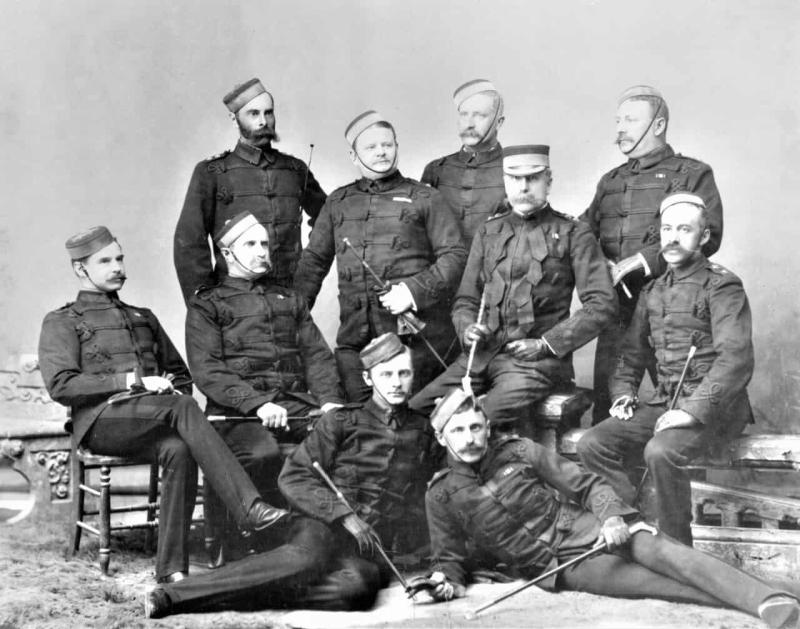An Exceptional Victorian 19th Century Canadian Artillery Sabre, With Near Mint Blade In Original Mirror Bright Polish and Frosted Panels of Etching
A very fine 19th century Canadian Artillery officer's purchase, very possibly used in the Boer War and even WW1.
With the officer's monogram etched upon the blade, A.O.P., so fruitful and successful research could reveal the sword owner's name.
The history of the Canadian militia covers hundreds of years. In 1534, Jacques Cartier fired the first artillery along the Atlantic coast. Since then, colonists served in the militias of New France and British North America.
Residents of Saint John, New Brunswick, formed the Loyal Company of Artillery in 1793. This unit exists today as the 3rd Field Artillery Regiment, RCA. The War of 1812 and the Rebellions of 1837-1838 helped promote new militia units.
The Crimean War (1853-1856) resulted in fewer British regulars in British North America. The Canadian Legislature passed the Militia Act of 1855, which authorized a volunteer militia of up to 5,000, including batteries of artillery, equipped and trained at government expense.
In 1855, the militia formed five volunteer artillery batteries in Hamilton, Kingston, Montreal, Ottawa, and Quebec City. They were the first Reserve or Non-Permanent Active Militia units.
War broke out in South Africa between the British and Dutch colonists called Boers in 1899. Canada provided a volunteer force to aid the British. Among the volunteers were three batteries of Field Artillery – C, D, and E Batteries.
C Battery helped relieve Colonel Robert Baden-Powell's Garrison under siege at Mafeking. D Battery helped save the 12 Pounder guns during the Battle of Leliefontein, while E Battery assisted with the liberation of Douglas on the Vaal River.
The Boers had changed how the British deployed artillery on the battlefield. They no longer expected an adversary to duel over open sights. The Boers used concealment, long-range fire, and harassing fire to their advantage. From then on, Gunners would master the art of indirect fire.
By December 1900, the three Canadian Artillery batteries departed South Africa. The Boers surrendered on 31 May 1902. Canada lost a total of 270 troops during the South African War.
In early 1915, the Canadians joined the British in the trenches of France and Belgium. Canadians participated in battles on the Western Front.
The Canadian Artillery directed bombardments against trenches, machine gun deployments, and dugouts. LCol A. G. L. McNaughton led in the development of counter-battery techniques to target enemy guns.
In 1916, Canada had four divisions with hundreds of guns. BGen E. W. B. "Dinky" Morrison commanded the Artillery. The main field guns included the QF 13 Pounder with the RCHA, and the QF 18 Pounder and the 4.5 Inch Howitzer with the RCA.
The Battle of Vimy Ridge, from 9 to 12 April 1917, set a new standard for artillery support to deal with strong enemy positions and counterattacks. The creeping barrage also evolved to protect advancing troops. These developments helped Canadians win the battle, which had eluded the British and the French.
In the spring of 1918, the Germans made one last effort to break the stalemate in Europe. After some initial success, the Spring Offensive began to falter against Allied resistance.
During the Last Hundred Days, the Allies were on the offensive to defeat Germany and end the war. Canadian Gunners operated field guns, horse artillery and anti-aircraft guns. The fighting stopped with the defeat of Germany and the Armistice of 11 November 1918.
During WW1, Canadian Gunners supported the infantry at all costs. From 1914 to1918, more than 600,000 Canadians joined the Canadian Expeditionary Force. Over 60,000 gave their lives and 170,000 were wounded. Of these, 2,565 Gunners died and 8,066 were among the wounded.
Three Canadian field batteries supported anti-communist forces in North Russia and Siberia (1918-1919). Canada also placed Garrison Artillery on the Island of St. Lucia in the British West Indies (1915-1919).
Code: 25044




